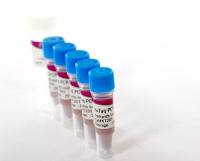Leucine-rich repeat-containing G protein-coupled receptors (LGRs) are type A rhodopsin-like GPCRs that include the glycoprotein pituitary hormone receptors for the thyroid-stimulating, follicle-stimulating, and luteinizing hormones (TSH, FSH, and LH); a pair of receptors for insulin-like peptides (LGR7, LGR8); and the LGR4, LGR5, and LGR6 receptors, which are the basis of this chapter. LGRs were initially identified as conceptual proteins extracted from DNA sequence databases, displaying sequence similarity with the glycoprotein hormone receptors. In 2007, LGR5 was identified as a marker of adult stem cells in several tissues, while still remaining an orphan GPCR with no known agonists. Since then, LGR4, LGR5, and LGR6 were shown to function as R-spondin receptors and controlling the Wnt pathway in a G protein-independent way. Whereas LGR4 deficiency causes developmental defects in many organs, fitting with its broad tissue expression pattern, LGR5 and LGR6 expression seems to be confined to stem cells, with only LGR5 knockout animals displaying a lethal malformation of the tongue (ankyloglossia). A consensus exists that LGR4 functions as a positive regulator of Wnt signaling, both in in vivo and in vitro Wnt reporter assays. For LGR5, whereas in vitro experiments show redundancy with LGR4 activity as a Wnt co-stimulator, arguments exist that it would inhibit rather than stimulate the Wnt pathway in vivo . The paradox of LGRs displaying many structural characteristics typical of rhodopsin-like GPCRs but showing G protein-independent R-spondin signaling activity leaves open the possibility that other agonists remain to be discovered.






